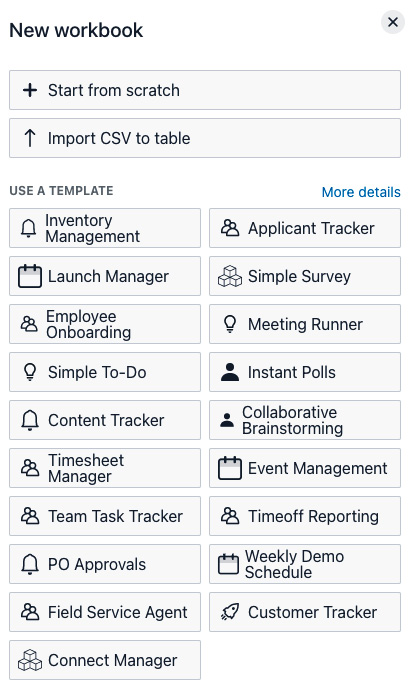Creating an Event Management app
Now that we know how we want our app to work, let's see what the template app can do. We will begin by creating the app and the associated workbook. Perform the following steps:
- On the Dashboard screen, locate the Create workbook button from the upper-right corner and click on it.
- You will see that a popup appears. Under the USE A TEMPLATE header (as shown in Figure 9.1), locate a tile with the label Event Management and click on it:

Figure 9.1 – Selecting the Event Management template
- Next, you will see a popup asking you to name the workbook and choose a team. For now, let's leave the default values as they are. Click on the Create button.
Figure 9.2 – Providing the workbook name and team details for creating the workbook



